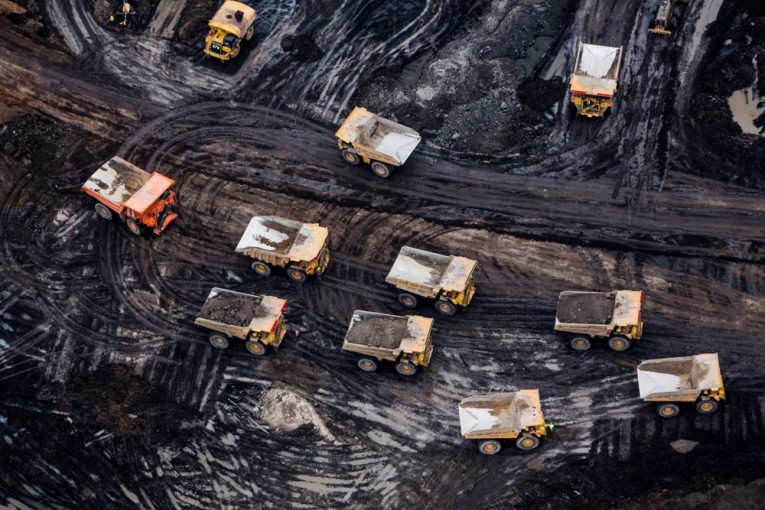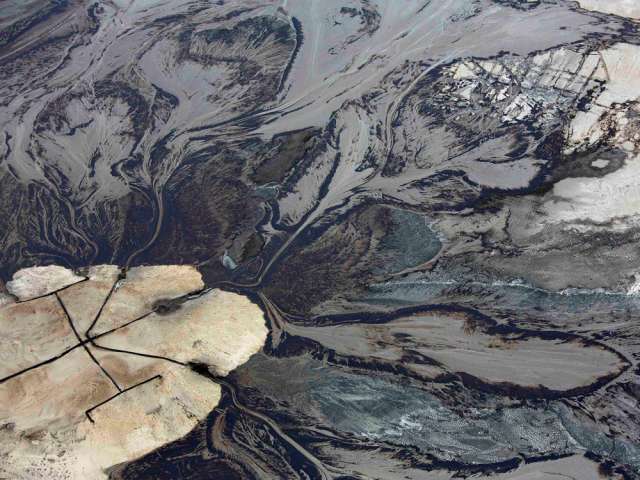
CALGARY — The Canadian oilpatch has cut nearly $10 billion in planned spending this year during the historic collapse in oil prices, but additional cuts may be needed to shore up the companies’ finances amid persistently low prices, warn analysts.
“The massive collapse in oil prices has dramatically impacted the financial strength of (Canada’s oil and gas producers), putting sustainability into question,” National Bank Financial Inc. analysts wrote in a research note.
The Canadian oil industry “will remain stressed” and forced to make further deep cuts to capital spending, dividend payments and executive compensation while looking for cost savings throughout their supply chains, analysts Travis Wood, Dan Payne and John Hunt wrote in a report published Thursday.
The COVID-19 pandemic has knocked out global oil demand as major economies have shut down and commuters stay home to prevent the virus from spreading. Oil demand is expected to fall by a record 8.6 million barrels per day this year, according to the International Energy Agency (IEA).
The grim outlook sent oil prices tumbling to an unprecedented -$37 per barrel at one point in April. The West Texas Intermediate benchmark price has rallied from those rock-bottom prices in recent weeks to US$29.58 on Friday. At the same time, the Western Canadian Select heavy oil price was trading 6.6 per cent higher on the day to just under US$25.
Both of those benchmarks are still trading below what Canadian producers need to break even. National Bank’s analysis shows that if WTI remains under US$30 per barrel for a sustained period, most Canadian oil companies could face liquidity challenges by 2022 without external funding.
“However, these companies have proven to be flexible in cutting capital programs, reducing dividend and adding new liquidity through debt markets and bank lines, which has improved the overall liquidity outlook,” the analysts wrote.
So far, Canadian companies have cut their budgets by an average of 40 per cent for a total of $10 billion, while dividends have been cut by an average of 82 per cent for a total of $2.4 billion, the bank estimates.
Even with those cuts, the industry is looking at a free cash-flow deficit of $25.3 billion, while also facing $6.5 billion in debt maturities by the end of 2021. Those two factors “will continue to create a dynamic where liquidity needs to be addressed.”
Overall, the analysts estimate that large and small Canadian oil and gas producers will see their debt balloon between 20 per cent and 25 per cent in the coming years as a result of the twin crises of high inventories and low demand.
In a separate note, RBC Capital markets pegged total spending cuts by Canadian producers a bit lower, at $6.9 billion, or around 8 per cent of the total spending cuts of $80 billion orchestrated by the global oil industry to stem the price slide.
A Friday research note from the bank shows Canadian oil producers initially planned to spend $16.6 billion this year, but the pandemic has forced them to cut spending by 42 per cent leaving them with capex of $9.7 billion.
The spending cuts by Canadian oil companies are the most severe among their peer group. U.S. producers are estimated to have cut their spending by 41 per cent on average, with the group of large integrated companies comprising Saudi Aramco and Royal Dutch Shell Plc., among others, cutting around 25 per cent on average, RBC estimates.
Half of the spending cuts in Canada have come from major producers, such as $1.3 billion by Suncor Energy Inc., $1.26 billion from Husky Energy Inc. and $1.16 billion by Canadian Natural Resources Ltd.

Suncor, Canada’s largest oil company by market capitalization, lost its status as a ‘dividend aristocrat,’ or a company that had increased its dividend yearly for an extended period of time, earlier this month when it cut its quarterly dividend 55 per cent to 21 cents per share and warned harder times are ahead for the sector.
“There’s absolutely no question that the second quarter will be far more challenging than the first quarter, both in the upstream and downstream sides of the business,” Suncor president and CEO Mark Little said May 6.
Even though Canadian Natural may be “too big to fail,” as it has one of the lowest cost structures across the sector, the company still requires WTI to trade US$35 per barrel to meet its upcoming maturities.
“The unchanged dividend remains controversial and should be reduced in our view, representing a cash outflow of approximately $2 billion annually,” National Bank analysts said.
Imperial Oil Ltd., which is majority owned by Exxon Mobil Corp. could also reduce its dividend to conserve up to $650 million annually, but it’s unlikely.
Given Cenovus’s recent cuts and efforts to reduce debt in recent years, National Bank predicts the company can withstand the current pricing environment for approximately three years, “although it could become tight by the end of 2022.”
Husky, meanwhile, could offset some of its projected losses by selling its retail fuel stations. The company’s largest shareholder, Hong Kong-based CK Hutchison Holdings Ltd., “remains a wildcard and could step in with additional liquidity support,” the bank said.
Financial Post
• Email: [email protected] | Twitter: geoffreymorgan
You can read more of the news on source
